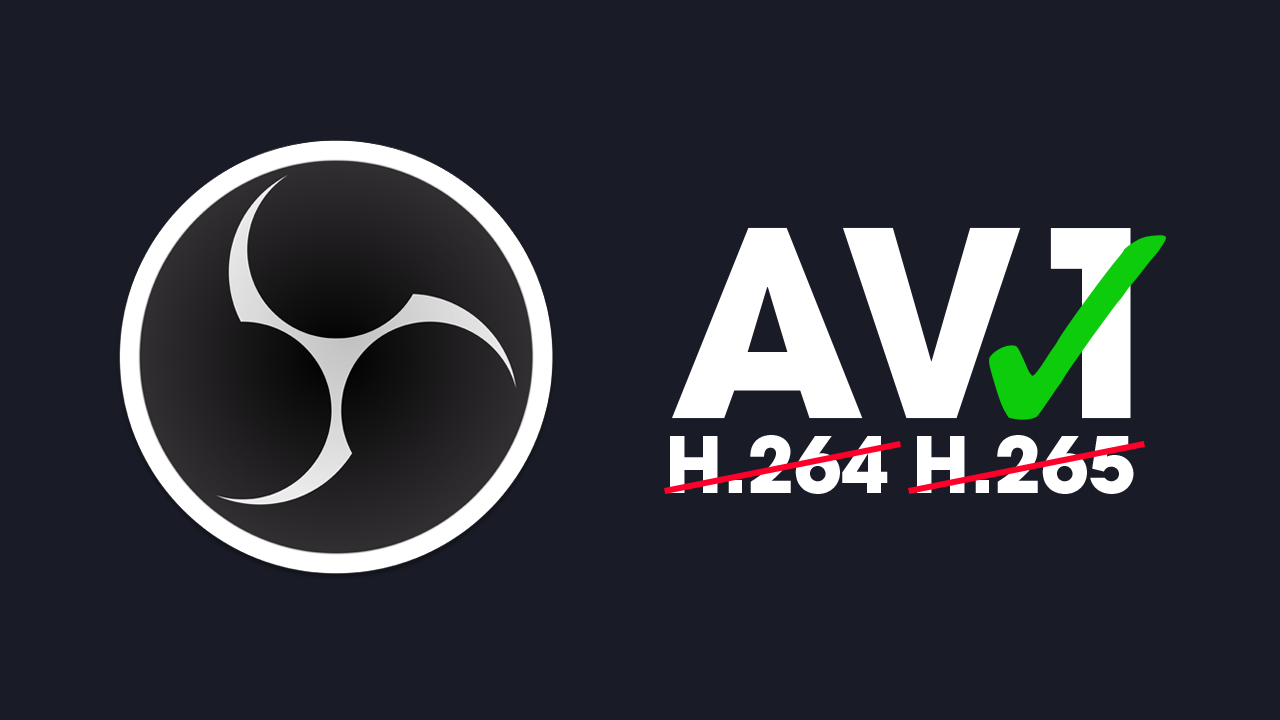If you are a streamer and want to stream in the highest possible quality, you’ll want to switch to AV1 encoding as soon as possible. While H.264 and H.265 do a decent job at 1080p, AV1 has far better efficiency which makes streaming at 4k60fps a possibility without any terrible artifacting or other visual distortions.

Table of Contents
Related: How to fix OBS Crashing when selecting & using NVIDIA Noise Removal or Eco Removal.
One of the most important aspects of streaming that most people don’t pay any attention to is the encoding format OBS, SLOBS or whatever else you use is using. By default, most tools will use H.264 which is fine but is starting to show its age, especially now that 2k and 4k streaming is becoming more popular. Now you’re probably wondering why other encoding options there are and which ones should you be using instead of H.264.
Here’s where things get quite interesting! AV1 is a relatively new video codec that is designed to provide significant improvements in video compression efficiency over previous codecs like H.264 and H.265 (also known as AVC and HEVC, respectively). Here are some key differences between AV1 and H.264/H.265:
Streaming with AV1 - The pros and Cons of using AVI for Streaming or Recording.
Compression Efficiency: AV1 is designed to provide up to 50% better compression efficiency compared to H.264 and H.265. This means that it can deliver the same quality of video at a lower bitrate, or higher quality video at the same bitrate.
Complexity: AV1 is a more complex codec than H.264 and H.265, both in terms of encoding and decoding. This means that it requires more processing power and time to encode and decode videos in AV1 format.
Patent Issues: H.264 and H.265 are patented video codecs, which means that anyone who wants to use them has to pay royalties to the patent holders. AV1, on the other hand, is an open-source codec that is free to use, which makes it an attractive option for many video producers.
Compatibility: Since AV1 is a newer codec, it may not be supported on as many devices and platforms as H.264 and H.265. However, many new devices and platforms are starting to support AV1, and it is expected to become more widely adopted over time.
On average you should get about a 1.3x to 1.5x better results between H.264 and AV1.
Note: AV1 isn’t yet (time of writing) supported in a lot of video editors like Premiere Pro so if you record content in OBS using AV1 and want to edit later on you will have to convert it back to H.264 or something compatible.
How do you use AV1 encoding in OBS and StreamLabs?
In order to take advantage of AV1 encoding in OBS or Streamlabs you’ll need to be using a 40 series or newer graphics card. Once you have met these requirements you’ll also want to make sure that you have the latest version of OBS or Stream Labs installed on your computer.
- Now you can open OBS on your computer and click Settings.
- From the Settings menu click Output in the left-hand column.
- Here you will see a list of important options. If you are Streaming select Streaming If you are Recording select Recording.
- For the final step use the drop-down menu next to Encoder and select AVI from the list of options. If you don’t see it listed, your hardware doesn’t support AV1 encoding or you need to update OBS.
That’s all you need to do, once you have selected AV1 you can stream to your streaming services as you normally do. You should also see better quality results with the same bandwidth settings as AV1’s compression gives you an added boost in efficiency.
